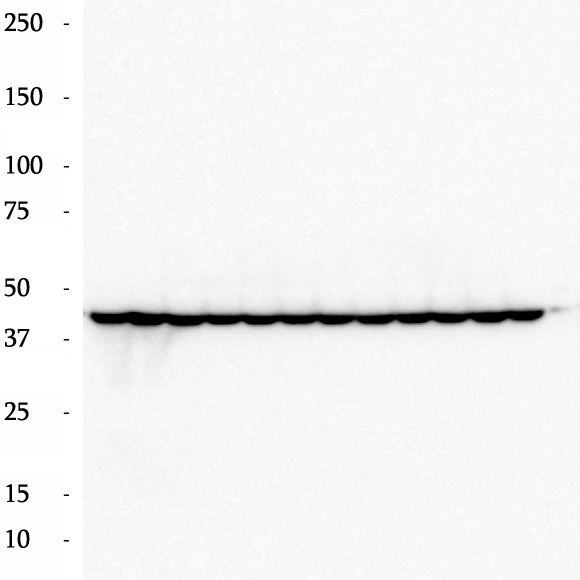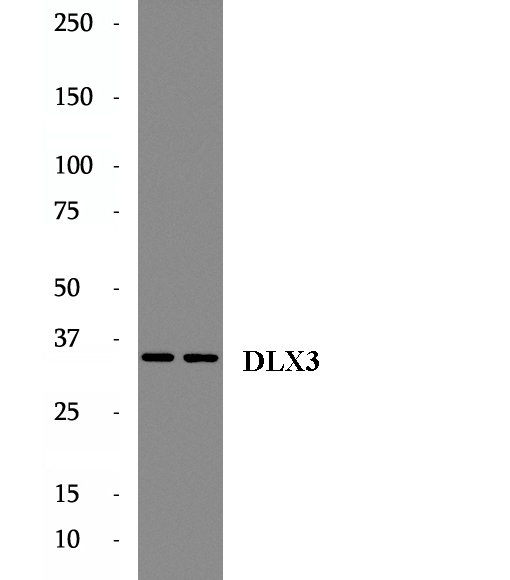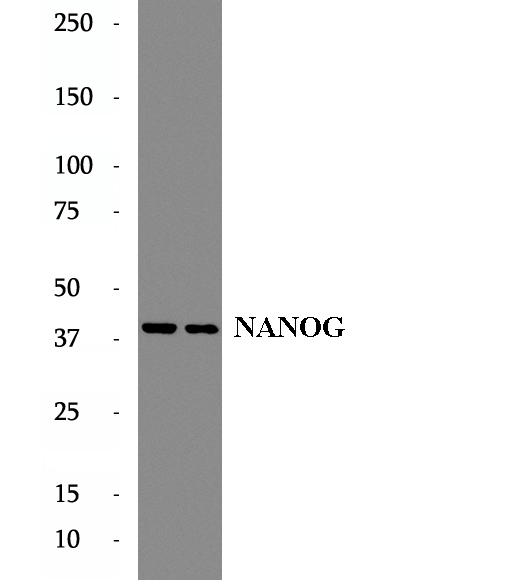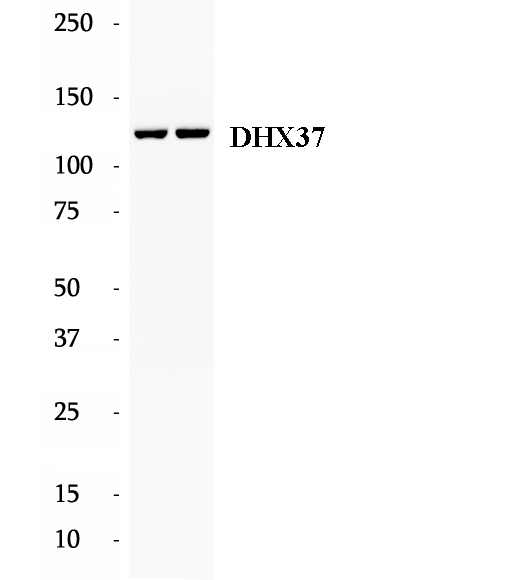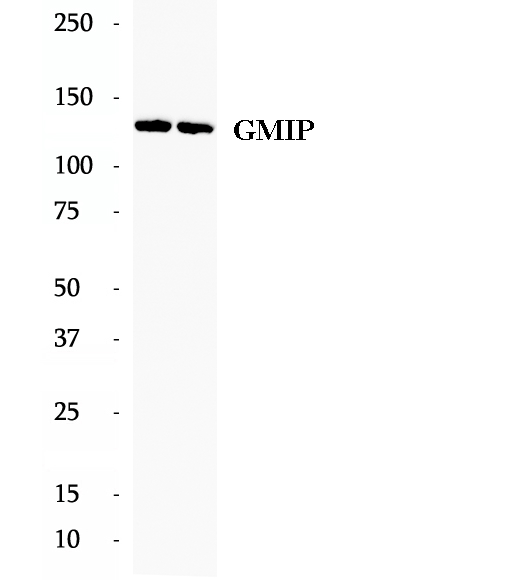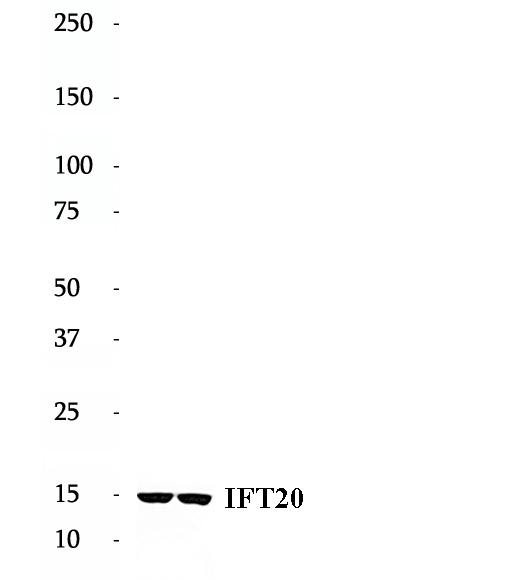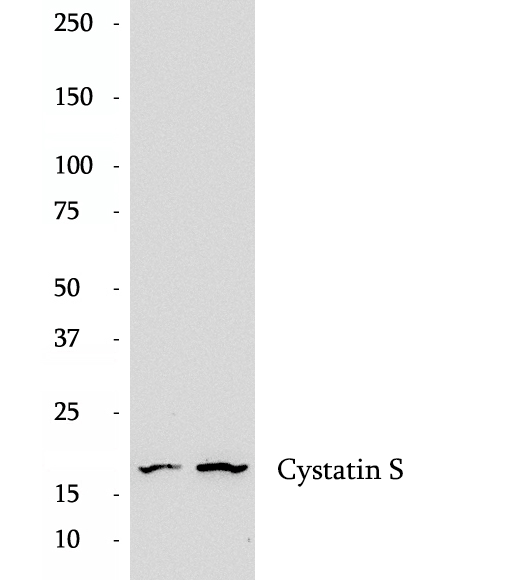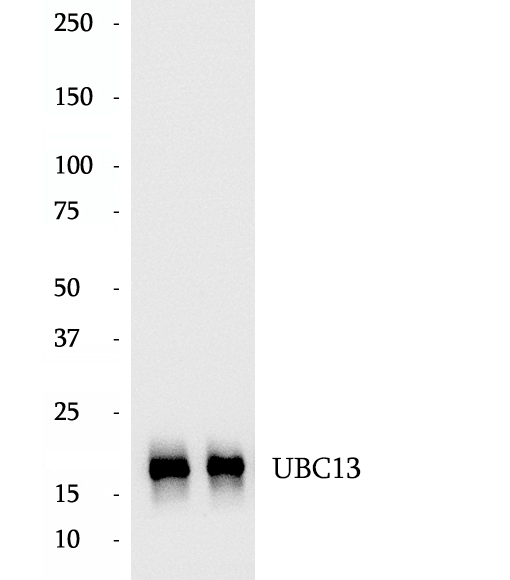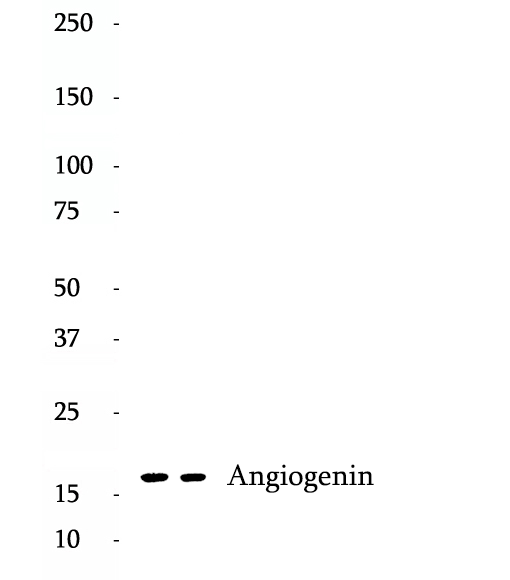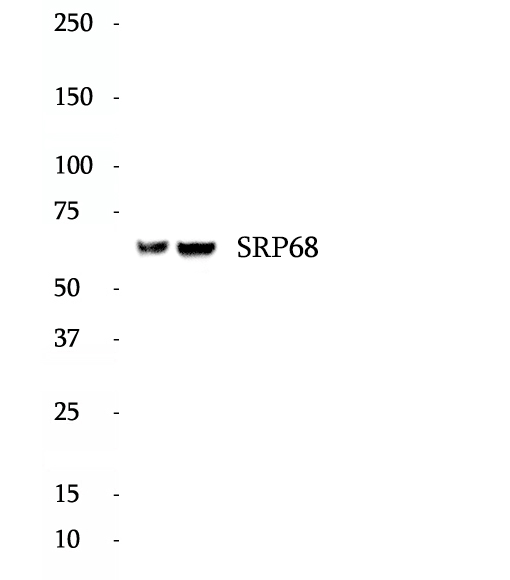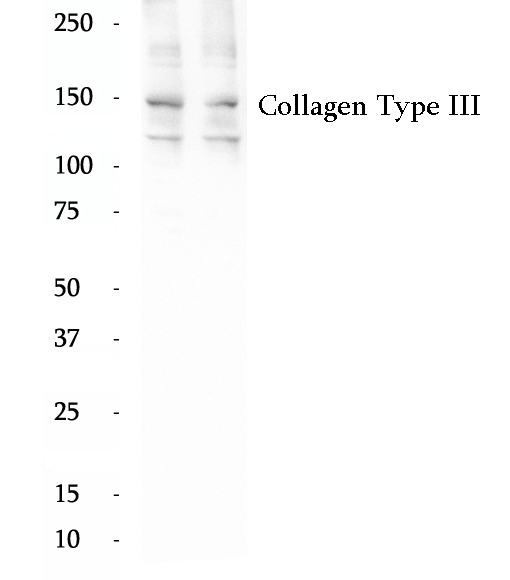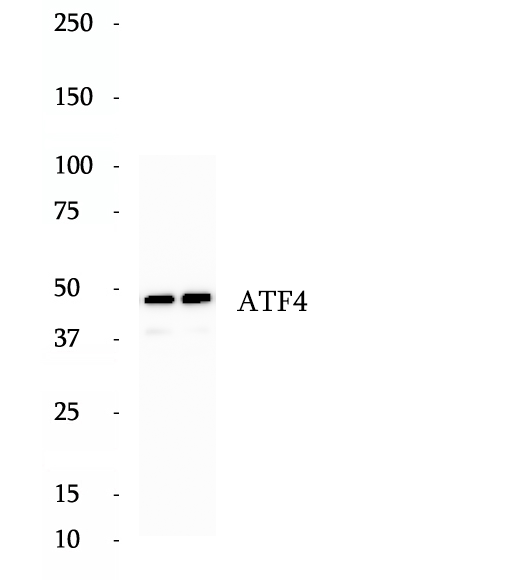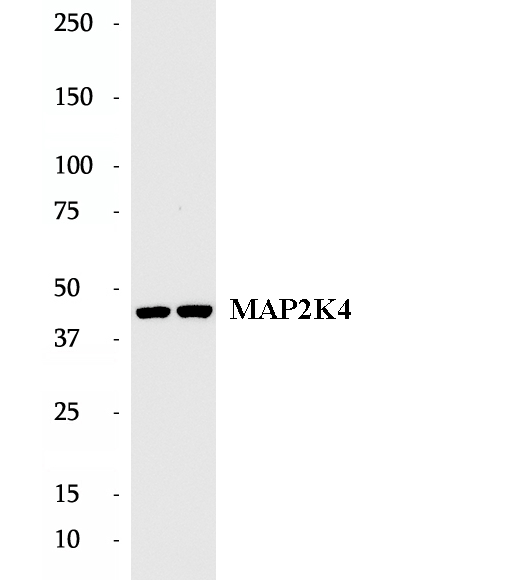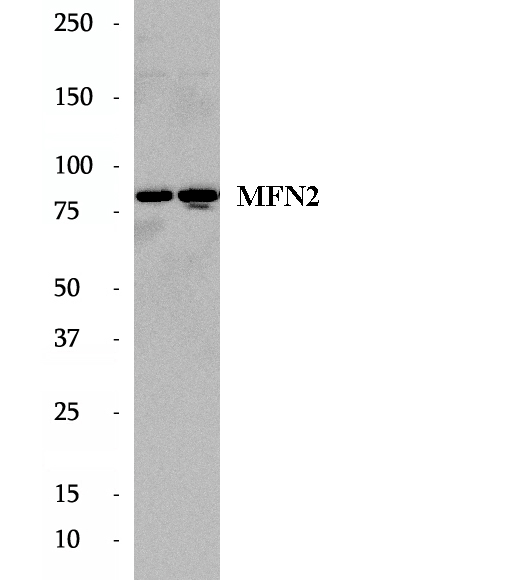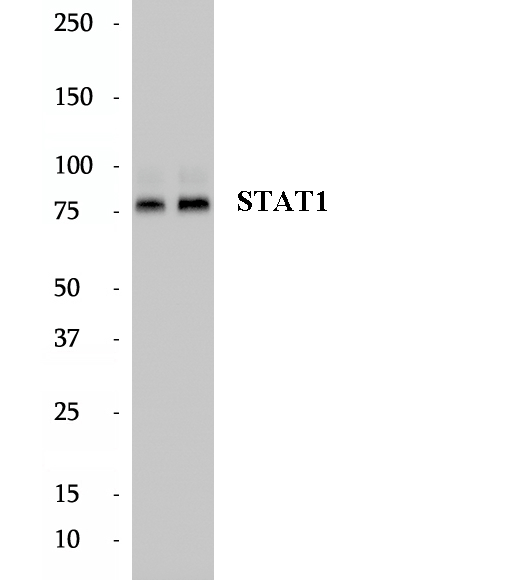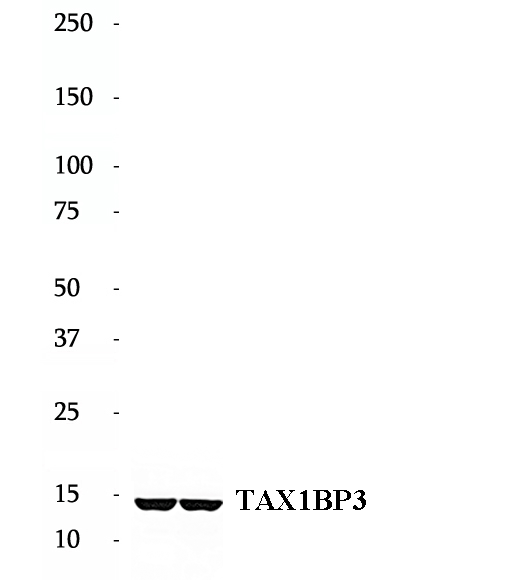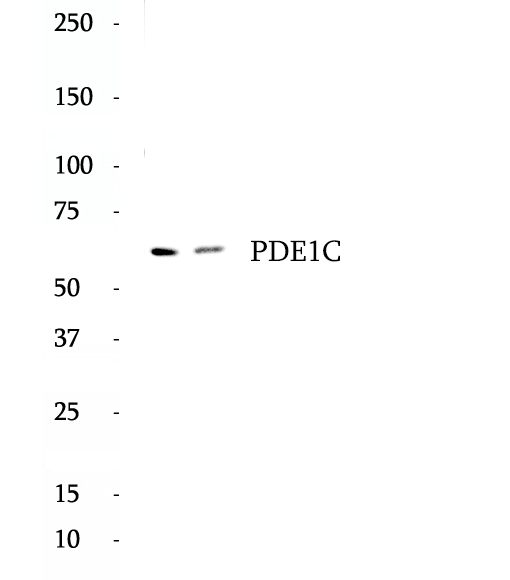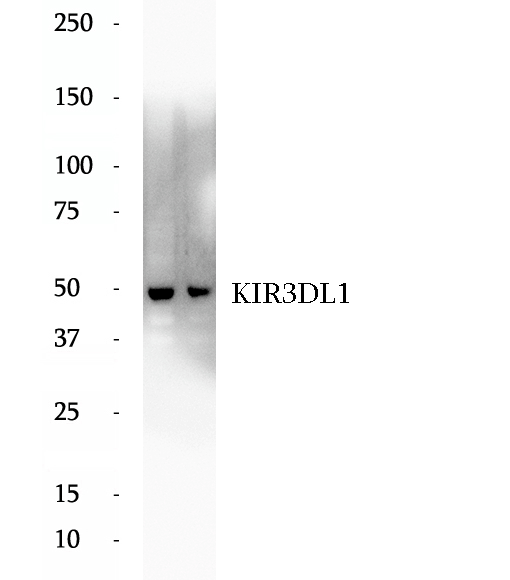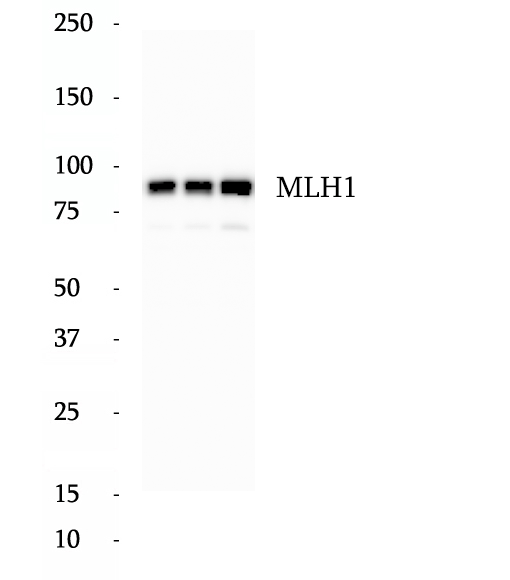|
BP69325
|
HRP Anti-Beta Actin antibody
|
|
|
|
|
Beta Actin, also named as ACTB and F-Actin, belongs to the actin family. Actins are highly conserved globular proteins that are involved in various types of cell motility and are ubiquitously expressed in all eukaryotic cells. At least six isoforms of actins are known in mammals and other vertebrates: alpha (ACTC1, cardiac muscle 1), alpha 1 (ACTA1, skeletal muscle) and 2 (ACTA2, aortic smooth muscle), beta (ACTB), gamma 1 (ACTG1) and 2 (ACTG2, enteric smooth muscle). Beta and gamma 1 are two non-muscle actin proteins. Most actins consist of 376aa, while ACTG2 (rich in muscles) has 375aa and ACTG1 (found in non-muscle cells) has only 374aa. Beta actin has been widely used as the internal control in RT-PCR and Western Blotting as a 42-kDa protein. However, the 37-40, 31, 15kDa cleaved fragment of beta actin can be generated during apoptosis process. This antibody was generated against N-terminal region of human beta actin protein and can cross-react with other actins.
|
|
BP61354
|
Anti-DLX3 antibody
|
|
|
|
|
Distal-less homeobox 3 (DLX3), a member of the Dlx family, plays a crucial role in epithelium, hair, bone, tooth and placental development. DLX3 is expressed during the calcium (Ca2+)-dependent epidermal differentiation process. The calculated molecular weight of DLX3 is 32 kDa. This antibody detects the 32-38 kDa protein in SDS-PAGE.
|
|
BP63038
|
Anti-NANOG antibody
|
|
|
|
|
Nanog is a member of the homeobox family of DNA binding transcription factors and has been shown to maintain embryonic stem (ES) cell self-renewal independently of leukemia inhibitory factor (LIF)/Stat3. Nanog mRNA is present in pluripotent mouse and human cell lines, and absent from differentiated cells. Functionally, Nanog works together with other key pluripotent factors (Oct4, Sox2, and Lin28) to reprogram human fibroblasts and generate induced pluripotent stem (iPS) cells. These key factors form a regulatory network to support or limit each other's expression level, which maintains the properties of ES cells. Affinity purified rabbit anti-Nanog can be used to demonstrate pluripotency of ES and IPS cells. There are two kinds of variants could recognized by NANOG, one is normal form (~39kd), the other is post-translation modified form (~48kd) (21136380 ). Nanog exists two isoforms with molecular weight 34.4 kDa and 31.9 kDa.
|
|
BP61328
|
Anti-DHX37 antibody
|
|
|
|
|
DHX37, also known as DDX37, KIAA1517. It is an ATP-bound RNA helicase that plays a role in the maturation of small ribosomal subunits in ribosomal biogenesis. The presence of DHX37 in early pre-ribosomal particles was monitored by a quality control pathway, and failure to recruit DHX37 resulted in pre-RRNA degradation. DHX37 binds directly to U3 small nucleolar RNA (snoRNA), and the catalytic activity of the helicase is required for dissociation of U3 small nucleolar RNA from the pre-ribosomal complex.In addition, it plays a role in early testicular development. It may also have an effect on brain development. It is expressed in the fallopian tubes, ovaries, uterus, testes and brain.
|
|
BP61957
|
Anti-GMIP antibody
|
|
|
|
|
GMIP (Gem-interacting protein) is a 970 amino acid protein that stimulates the GTPase activity of RhoA in vitro and in vivo. GMIP interacts with Gem through its N-terminus and has a Rho GTPase-activating protein domain at its C-terminus. The Rho family of GTP-binding proteins plays a role in the development of neuronal structure. GMIP is able to inhibit RhoA function, leading to Actin cytoskeletal reorganization in vivo.
|
|
BP62308
|
Anti-IFT20 antibody
|
|
|
|
|
Intraflagellar transport (IFT), mediated by molecular motors and IFT particles, is an important transport process that occurs in the cilium. IFT particles are multi-subunit complexes that are made up of complex A and complex B. IFT20 is a component of IFT complex B and involved in ciliary process assembly. It is associated with the Golgi complex and plays a role in the trafficking of ciliary membrane proteins from the Golgi complex to the cilium.
|
|
BP61216
|
Anti-Cystatin S antibody
|
|
|
|
|
Cystatins are a family of inhibitors of cysteine peptidases that comprises the salivary cystatins D and S-type (including CST5 and CST4,1,2) and cystatin C-type (CST3). The D and S-type cystatin have also been detected in seminal plasma, tears, and tracheobronchial fluid but not in other fluids and secretions where cystatin C is found. And the CST4 was expressed in the serous acinar and demilune cells of the human submandibular gland and at lower levels in the serous acini of the parotid gland. CST4 specifically combines with cysteine protease to regulate its activity, thus preventing hydrolysis of the extracellular matrix. And some studies propose that CST4 might be a biomarker for gastrointestinal cancer.
|
|
BP65098
|
Anti-UBC13 antibody
|
|
|
|
|
Ubc13 is an ubiquitin E2 conjugating enzyme that participates with many different E3 ligases to form lysine 63-linked (Lys63) ubiquitin chains that are critical to signaling in inflammatory and DNA damage response pathways.
|
|
BP60193
|
Anti-Angiogenin antibody
|
|
|
|
|
Angiogenin (ANG) also known as ribonuclease 5 is a small 123 amino acid protein that in humans is encoded by the ANG gene. Angiogenin is a potent stimulator of new blood vessels through the process of angiogenesis. Ang hydrolyzes cellular RNA, resulting in modulated levels of protein synthesis and interacts with DNA causing a promoter-like increase in the expression of rRNA. Ang is associated with cancer and neurological disease through angiogenesis and through activating gene expression that suppresses apoptosis.
|
|
BP64625
|
Anti-SRP68 antibody
|
|
|
|
|
SRP68 is a subunit of the signal recognition particle (SRP), a ribonucleoprotein complex central to membrane protein targeting.
|
|
BP62664
|
Anti-LRRC52 antibody
|
|
|
|
|
LRRC52 (leucine-rich repeat-containing protein 52) belongs to the gamma family of the BK channel accessory subunits, which potentially regulate the channel's gating properties. It is dominantly expressed in testis and skeletal muscle, with much lower expression in several other tissues including placenta, kidney, lung, and some glands. LRRC52 has been reported as a Slo3 auxiliary subunit that helps define the specific alkalization dependence of KSper activation. LRRC52 has a calcular molecular weight of 35 kDa. This polyclonal antibody raised against 24-244aa of human LRRC52 reveals a band of 45 kDa, which is consistent with the molecular weight of glycosylated form of LRRC52.
|
|
BP61022
|
Anti-Collagen Type III antibody
|
|
|
|
|
Type III collagen is a fibrillar forming collagen comprising three α1 (III) chains and is expressed in early embryos and throughout embryogenesis chain of human type III procollagen detects type III procollagen at 140-180 kDa and also in some lysates reveals a 70-kDa band which has been reported and may represent a cleaved form of type III procollagen.
|
|
BP60345
|
Anti-ATF4 antibody
|
|
|
|
|
ATF4 is a transcription factor, that accumulates predominantly in osteoblasts, where it regulates terminal osteoblast differentiation and bone formation. As a basic leucine-zipper (bZip) transcription factor, ATF4 can regulate amino acid metabolism, cellular redox state, and anti-stress responses. It also regulates age-related and diet-induced obesity and glucose homeostasis in mammals, and has conserved metabolic functions in flies. Due to its location at chromosome 22q13, a region linked to schizophrenia, ATF4 is considered as a positional candidate gene for schizophrenia. Otherwise, since ATF4 is induced by tumour microenvironmental factors, and regulates processes relevant to cancer progression, it might serve as a potential therapeutic target in cancer. Endogenous ATF4 protein has a molecular mass of 50kd. ATF4 can bind DNA as a homodimer and as a heterodimer. ATF4 is ubiquitinated by SCF (BTRC) in response to mTORC1 signal, followed by proteasomal degradation and leading to down-regulate expression of SIRT4, so the molecular weight of ATF4 may be 70 kDa.
|
|
BP62726
|
Anti-MAP2K4 antibody
|
|
|
|
|
MAP2K4 is also named as JNKK1, MEK4, MKK4, PRKMK4, SEK1, SERK1, SKK1 and belongs to the protein kinase superfamily. MAP2K4 is a member of the mitogen-activated protein kinase family, originally identified as a kinase involved in the stress-activated protein kinase pathway by directly phosphorylating c-Jun NH 2-terminal kinase. This protein has 2 isoforms produced by alternative splicing.
|
|
BP62832
|
Anti-MFN2 antibody
|
|
|
|
|
MFN2, also named as CPRP1 and KIAA0214, belongs to the mitofusin family. It is an Essential transmembrane GTPase, which mediates mitochondrial fusion. MFN2 acts independently of the cytoskeleton. It therefore plays a central role in mitochondrial metabolism and may be associated with obesity and/or apoptosis processes. Overexpression of MFN2 induces the formation of mitochondrial networks. It plays an important role in the regulation of vascular smooth muscle cell proliferation. Defects in MFN2 are the cause of Charcot-Marie-Tooth disease type 2A2 (CMT2A2). Defects in MFN2 are the cause of Charcot-Marie-Tooth disease type 6 (CMT6). Ubiquitinated forms of Mfn2 (mono- and polyubiquitinated) are present during mitophagy.
|
|
BP64647
|
Anti-STAT1 antibody
|
|
|
|
|
Signal transducer and activator of transcription 1 (STAT1) is a transcription factor which in humans is encoded by the STAT1 gene. It is a member of the STAT protein family.
|
|
BP64769
|
Anti-TAX1BP3 antibody
|
|
|
|
|
Tax-interacting protein 1 (TIP-1, also known as Tax1bp3 or glutaminase-interacting protein, GIP) is unique in its simple structure, a single PDZ domain is the only functional and structural unit identified so far in this small PDZ protein (124 amino acids in human and mouse). High level of TIP-1 expression was detected in human invasive breast cancer cells and that is important for tumor cell adhesion, migration and pulmonary metastasis. However, the precise biological effects of TIP-1 and its functional mechanisms have largely remained elusive. Mutation of TAX1BP3 can cause Dilated Cardiomyopathy with Septo-Optic Dysplasia.
|
|
BP63461
|
Anti-PDE1C antibody
|
|
|
|
|
Calcium/calmodulin-dependent 3',5'-cyclic nucleotide phosphodiesterase 1C is an enzyme that in humans is encoded by the PDE1C gene.
|
|
BP62516
|
Anti-KIR3DL1 antibody
|
|
|
|
|
Killer cell immunoglobulin-like receptors (KIRs) are transmembrane glycoproteins expressed by natural killer cells and subsets of T cells. The KIR proteins are classified by the number of extracellular immunoglobulin domains (2D or 3D) and by whether they have a long (L) or short (S) cytoplasmic domain. KIR3DL1 is a receptor on natural killer (NK) cells for HLA Bw4 allele. It inhibits the activity of NK cells thus preventing cell lysis. KIR3DL1 and KIR3DS1 are highly homologous. This antibody is raised against 22-344 amino acids of human KIR3DL1 and recognizes both KIR3DL1 (49 kDa) and KIR3DS1 (43 kDa).
|
|
BP62859
|
Anti-MLH1 antibody
|
|
|
|
|
MLH1, also named as COCA2, belongs to the DNA mismatch repair mutL/hexB family. It heterodimerizes with PMS2 to form MutL alpha which is a component of the post-replicative DNA mismatch repair system (MMR). MutL alpha (MLH1-PMS2) interacts physically with the clamp loader subunits of DNA polymerase III, suggesting that it may play a role to recruit the DNA polymerase III to the site of the MMR. MLH1 also implicated in DNA damage signaling, a process which induces cell cycle arrest and can lead to apoptosis in case of major DNA damages. MLH1 heterodimerizes with MLH3 to form MutL gamma which plays a role in meiosis. Defects in MLH1 are the cause of hereditary non-polyposis colorectal cancer type 2 (HNPCC2). Defects in MLH1 are a cause of mismatch repair cancer syndrome (MMRCS). Defects in MLH1 are a cause of Muir-Torre syndrome (MTS). Defects in MLH1 are a cause of susceptibility to endometrial cancer. Western blot analysis with an MLH1 antibody detected a 85-100 kDa band. Full-length human MLH1 is specifically cleaved into degradation products of 40-45 kDa by caspase-3. This antibody is specific to MLH1.
|
